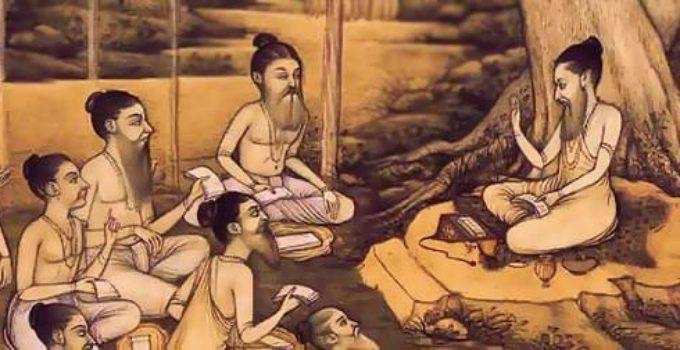It must not be thought that, although Prakriti becomes conscious Shakti in manifestation, it is in any of its forms the ultimate object of worship.
Worship, however, implies a duality. And although essentially the worshipper and the worshipped are the same – and it is the realization of this Unity which is the end and aim of worship – yet Shakti in manifestation cannot but be the object of worship so long as the Ego has its individuality, which is made of the stuff of Prakriti.
It is, therefore, that in spiritual culture the Tantra postulates two Shaktis – Vachaka Shakti is manifested Chit in Prakriti, and Vachya Shakti is Chit itself, which is the goal to be attained.
It is by the realization of Vachaka Shakti that the Vachya Shakti can be attained. The Vachya Shakti is formless, and cannot, therefore, be the object of any form of Upasana (worship) or yoga practice.
The manifested Shakti is the Power which is the object of adoration, prayer, and praise. So long as the human Soul remains such, it cannot go beyond. But when the Soul-that is, the causal body or Karana Sharira – is cast off, the duality forever disappears, and the self is merged into that which is Shakti in itself.
By whatever name it may be, whether Krishna, Vishnu, Shiva, Kali, Durga, Ganapati, or Surya, it is the manifested Shakti, the Saguna Brahman.
But there are certain sects of worshippers who assign an inferior position to Shakti, and regard it as a female power only, subordinate to the God they worship. That the God they worship is Shakti as well is ignored by them.
In this they take an anthropomorphic view of the Supreme, who according to them, is male (Shaktiman), and Shakti (his Consort) is his inferior, like some conceptions of an Oriental wife.
The Tantra repudiates this view, and regards both Shaktiman and Shakti as the male and female aspects of the one Shakti.
Where would be Vishnu or Krishna without Shakti (Power)? Bereft of Shakti, the Vehicle, designated as Krishna or Vishnu, and all other Vehicles from the highest God to the lowest atom, would be but a dead inert mass.
It is Shakti which is life, intelligence, and consciousness. No state of existence can be superior to it. Both these aspects of Shakti are inseparable, and the one is not inferior to the other, any more than the negative pole of electricity can be considered to be subordinate to the positive.
Hence it is that all the Gods are associated with Goddesses; hence it is that Rama has his Sita, Krishna has his Radha, and Mahakala is accompanied by Mahakali.
Principles of Tantra
Arthur Avalon (Sir John George Woodroffe)


